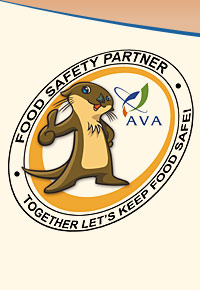




Home > Food Safety Tips
Food Safety Tips
Journey of Our Products
We ensure that the cold chain system (0-4°C) applies at all stages from production to point of sales.Food Safety While Shopping
Dos- Choose meat that has no excessive moisture on the surface of the meat. Excessive moisture is an indication that the meat has not been handled and stored properly.
- Buy meat in quantities just enough to meet your family’s consumption needs.
- Go home directly after buying meat so that it will not be left unrefrigerated for too long.
Don’ts
- Do not buy meat products with damaged packaging.
Food Safety At Home
Consumers play an important role in ensuring that food is safe for consumption. Follow the recommended safe handling and storage information indicated on meat product packages. For example, thaw frozen meat safely in the refrigerator or use the microwave oven.Dos
- Separate raw meat from cooked or ready-to-eat food to prevent cross-contamination.
- When handling meat, use separate cutting boards and utensils for raw meat and cooked food.
- For frozen meat, thaw only the amount you need.
- Thaw frozen meat safely in the refrigerator or use the microwave oven.
- Chilled and thawed meat should be placed in the refrigerator if not cooked immediately.
- If you need to freeze the meat, divide into portions based on your normal serving size.
- To avoid excessive evaporation, wrap the meat tightly in clean plastic bags before placing it into the refrigerator.
- When storing or thawing meat in the refrigerator, place the meat in containers or trays to prevent the meat juices from contaminating other food.
Don’ts
- Do not leave chilled or thawed meat at room temperature for more than 2 hours as bacteria will rapidly multiply.
- Do not refreeze meat that has been completely thawed.
- Do not overstock your meat supply. Follow the rule of first in / first out, i.e. use older stock first.
For additional Food Safety Education Tips, please visit
English - AVA Food Safety
Chinese - AVA 食品安全
© 2018 Leong Hup Food Pte Ltd. All rights reserved.
